L’Anse Aux Meadows – Viking Site Confirms Norse Vinland Sagas Were Based On Real Events
Jan Bartek - AncientPages.com - The strength of archaeology is filling in history gaps and confirming mythical events as authentic. One should be careful and not dismiss myths and legends as pure ancient fantasies. Many myths and legends tell stories rooted in genuine, old incidents.
Many examples of mythical stories have been confirmed by modern science.
Norse Sagas tell of early Viking Voyages to foreign, distant lands. One was America, but these accounts have long been dismissed as fictional tales. Archaeological discoveries force scientists to reconsider previous theories.
Historical evidence of the early Norse explorations of the North American coast and Canada comes almost entirely from Icelandic Vinland sagas that consist of two texts, the Greenlanders' Saga and the Erik the Red's Saga. Vikings were excellent navigators and sailors who journeyed far and explored distant lands.
"One of the main reasons behind Vikings' success in reaching distant lands lies in their remarkable longships. The Vikings' ships were the greatest technical and artistic achievement of the European Dark Ages. Without these great ships, the Viking Age would never have happened." 1
Vikings were the lords of the oceans, and historians have long wondered how far the Norsemen sailed.
The Vinland Sagas, written between 1220 and 1280, tells of the Norse settlements in Greenland and Vinland. What can the Vinland Sagas reveal about the Vikings' knowledge of North America and Canada?
General view of a reconstructed Viking hut at L'Anse aux Meadows. Credit: SemanticsDavid - CC BY-SA 3.0
L'Anse Aux Meadows Sheds Ligh On The Vinland Sagas
"The historicity of the Vinland Sagas has been widely discussed for more than a century and examined from a vast number of perspectives: as literature, history, geography, oral traditions, anthropological records and validation of archaeological phenomena, as well as personal perceptions as travel guides to Norse landings in North America. The views have varied with disciplines." 2
The Vinland Sagas represent comprehensive information about the Norse exploration of the Americas, but to understand these Icelandic texts, one must look at them through the spyglass of archaeology.
The discovery of the Viking site L'Anse Aux Meadows in Newfoundland, Canada, changed historians' understanding of early Viking exploration. The place was discovered separately in the late 1950s by Jorgen Meldgaard and Helge Ingstad, who "abruptly lifted the question of Norse settlements in temperate North America from the morass of "cult archaeology."3
In the following years, archaeological findings at the L'Anse Aux Meadows shed more light on the events described in the Vinland Sagas.
Vikings boldly crossed the oceans and explored foreign and distant lands. Painting: Summer in the Greenland coast c.1000 by Carl Rasmussen. Credit: Public Domain
L'Anse Aux Meadows has been home to people for about 6,000 years. Before the Norse arrived in Newfoundland, the site was occupied by indigenous people. Some stayed there longer, and some left and searched for a better place to live.
When Helge Ingstad and his wife excavated at the site, they discovered several artifacts that appeared to be of Norse origin. These finds suggest that the L'Anse aux Meadows site was a base camp or gateway to the rich lands around the Gulf of St. Lawrence, which is likely the Vinland of the Sagas.
Vinland is the area of coastal North America and Newfoundland explored by Norse Vikings, where explorer Leif Erikson first landed in ca. 1000, approximately five centuries before the voyages of Christopher Columbus.
Leif Erikson's Father, Erik The Red, Did Not Want To Travel To The New World
"We do not know much about Leif Eriksson. Beyond the Vinland Sagas, he appears only in one phrase in the Saga of St. Olaf. In 1018, when King Olaf was advised to kill his cousin King Henrik of Oplands. Olaf instead commanded the Icelandic merchant Thorainn Netjolfsson to take him to Leif Eriksson in Greenland. Although the historicity of Leif's siblings has been questioned, Leif, like his father Erik, is widely considered to have been a historical person."
Authentic Viking recreation, Newfoundland, Canada. Credit: Dylan Kereluk from White Rock, Canada - Flickr - CC BY 2.0
Leif's father, Erik the Red, was a famous Viking outlaw who colonized Greenland. Erik the Red had four children, and they inherited his adventurous nature. Leif invited his father on the voyage to the New World, but as Norse Sagas tell, Erik fell off his horse on his way to the ship. He considered this accident a bad sign and left his son without company.
Leif's sister, Freydis Eiriksdottir, followed in her brother's footsteps. She left Greenland to explore new, distant lands. "Around the year 1004, Freydis Eiriksdottir joined Thorfinn Karlsefni, an Icelandic explorer, and made her first journey to Vinland. It was an expedition that ended in a fight with Native Americans.
Vikings made an attempt to trade with the North American Natives, which the Norse called Skraelings, but it resulted in failure and chaos." 1
Birgitta Wallace, who has conducted extensive work at the site, argues, "the function of L'Anse Aux Meadows was that of a specialized winter camp, a base for further exploration and a gateway to resources." 2
This exciting theory raises the hope archaeologists can locate more Norse settlements in the area.
There could be many ancient Viking sites that have not been found yet. Some years ago, scientists announced they "finally made an exciting discovery that could re-write the history of Vikings in North America. Scientists found a fire-cracked stone and some mangled scraps of iron unearthed from a muddy patch of ground called Point Rosee." 5
Archaeologist Sarah Parcak said it was either an ancient Viking site or "an entirely new culture" that strongly resembled the Norsemen.
In addition to L'Anse Aux Meadows and Point Rosee, "a number of scattered Norse artifacts have been recovered from several Inuit Sites in artic Canada and one Indian locality in Maine." 3
"On the desolate north bank of the Payne Estuary, 15 miles above the village of Payne Bay, near the west coast of Ungava Bay, northern Quebec, Canada, there is a very curious ancient monument resembling Thor's Hammer.
The monument is a two-ton stone structure, about 8 feet high, and measures 4-1/2 feet across at its pointed lintel, surmounted by a 14-inch-high capstone. It is unknown who raised the monument, and there is some dispute about its builders. The structure was discovered in 1964 by archaeologist Thomas E. Lee during an anthropological expedition to Ungava. Lee was struck by its roughly Nordic design and dubbed it the Hammer of Thor." 6
When asked about this strange monument, the Inuit said their ancestors did not raise the structure. It was already there before their arrival. The monument's Norse resemblance can be coincidental, but the Vikings probably constructed it.
The Norsemen's presence in North America and Canada still needs to be better understood and needs further research.
L'Anse Aux Meadows is unique because this is the first known Norse settlement in the New World, and archaeologists' excavations in the area have confirmed Viking explorers established a large base there about the year 1000.
L'Anse Aux Meadows thus confirms Norse Sagas were based on actual events.
Written by Jan Bartek - AncientPages.com Staff Writer
Updated on December 10, 2023
Copyright © AncientPages.com All rights reserved. This material may not be published, broadcast, rewritten or redistributed in whole or part without the express written permission of AncientPages.com
Expand for references- Ellen Lloyd - Viking Longships: Fearless Dragonships Daring The Oceans And Seas, AncientPages.com
- Wallace, Birgitta. "L'Anse Aux Meadows, Leif Eriksson's Home in Vinland." Journal of the North Atlantic, 2009, 114-25.
- McGovern, Thomas H. "The Archaeology of the Norse North Atlantic." Annual Review of Anthropology19 (1990): 331-51
- Ellen Lloyd - Shield Maiden Freydis Eiriksdottir – Hot-Tempered Daughter Of Erik The Red Terrified Native Americans, AncientPages.com
- Ellen Lloyd - Discovery Of Second Viking Site Point Rosee In North America Could Re-Write Ancient History, AncientPages.com
- Ellen Lloyd - Mysterious Hammer Of Thor In Canada Was Built Before The Arrival Of The Inuit – Did Vikings Raise The Monument?, AncientPages.com
More From Ancient Pages
-
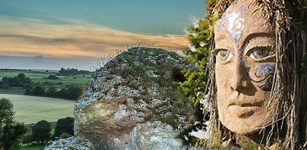 Eriu: Powerful Irish Goddess And Sacred Uisneach Hill Where She And God Lugh Are Buried
Celtic Mythology | Feb 15, 2019
Eriu: Powerful Irish Goddess And Sacred Uisneach Hill Where She And God Lugh Are Buried
Celtic Mythology | Feb 15, 2019 -
 Deir el-Bahri – Sacred Resting Place For The Pharaohs
Featured Stories | Jul 16, 2025
Deir el-Bahri – Sacred Resting Place For The Pharaohs
Featured Stories | Jul 16, 2025 -
 Karahunge – ‘Speaking Stones’ With Secrets – Remarkable Prehistoric Structures Of Armenia
Places | Jun 4, 2020
Karahunge – ‘Speaking Stones’ With Secrets – Remarkable Prehistoric Structures Of Armenia
Places | Jun 4, 2020 -
 Yakhchals: Ingenious Ancient ‘Refrigerators’ Could Store Ice In The Hot Desert
Ancient Technology | Sep 15, 2018
Yakhchals: Ingenious Ancient ‘Refrigerators’ Could Store Ice In The Hot Desert
Ancient Technology | Sep 15, 2018 -
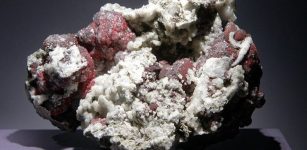 World’s Oldest Mercury Poisoning Revealed In Copper Age Iberia
Archaeology | Nov 16, 2021
World’s Oldest Mercury Poisoning Revealed In Copper Age Iberia
Archaeology | Nov 16, 2021 -
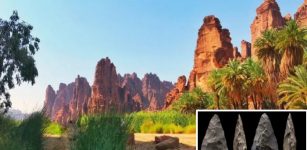 ‘Green’ Saudi Arabia Was Home To A 350,000-Year-Old Human Settlement
Archaeology | May 18, 2021
‘Green’ Saudi Arabia Was Home To A 350,000-Year-Old Human Settlement
Archaeology | May 18, 2021 -
 Did The 8 Omens Of The Aztecs Foretell The End Of Their Civilization?
Civilizations | Jan 30, 2020
Did The 8 Omens Of The Aztecs Foretell The End Of Their Civilization?
Civilizations | Jan 30, 2020 -
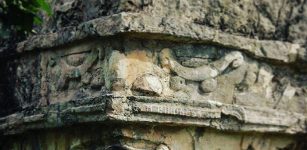 Giant Azaes-Itzamna: Ninth King Of Atlantis, Founder Of Chichen Itza And Teacher Of Maya People
Civilizations | Jun 29, 2017
Giant Azaes-Itzamna: Ninth King Of Atlantis, Founder Of Chichen Itza And Teacher Of Maya People
Civilizations | Jun 29, 2017 -
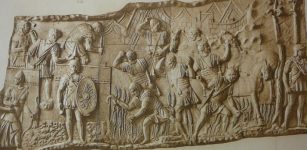 Secret Police In Ancient Rome – Frumentarii: Who Were They And What Was Their Role?
Featured Stories | Aug 12, 2019
Secret Police In Ancient Rome – Frumentarii: Who Were They And What Was Their Role?
Featured Stories | Aug 12, 2019 -
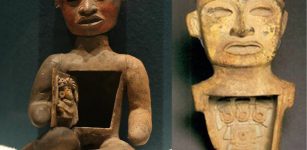 Mysterious Teotihuacan ‘Host’ Figurines From Metepec, Mexico
Artifacts | Jan 6, 2016
Mysterious Teotihuacan ‘Host’ Figurines From Metepec, Mexico
Artifacts | Jan 6, 2016 -
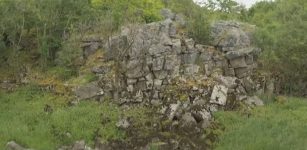 Unique Bronze Age Fortress Discovered In Galway, Ireland
Archaeology | Jun 25, 2022
Unique Bronze Age Fortress Discovered In Galway, Ireland
Archaeology | Jun 25, 2022 -
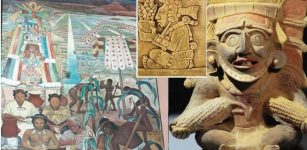 Yum Kaax, Mayan God Of Agriculture, Lord Of Woods And Caretaker Of Animals
Featured Stories | Jul 15, 2020
Yum Kaax, Mayan God Of Agriculture, Lord Of Woods And Caretaker Of Animals
Featured Stories | Jul 15, 2020 -
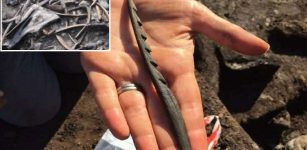 Archaeologists Shed Light On The Lives Of Stone Age Hunter-Gatherers In Britain
Archaeology | Jan 20, 2023
Archaeologists Shed Light On The Lives Of Stone Age Hunter-Gatherers In Britain
Archaeology | Jan 20, 2023 -
 Eccentric Holy Roman Emperor Rudolf II Whose Occult Interest And Mistakes Led To The Thirty Years’ War
Featured Stories | Apr 8, 2025
Eccentric Holy Roman Emperor Rudolf II Whose Occult Interest And Mistakes Led To The Thirty Years’ War
Featured Stories | Apr 8, 2025 -
 Daily Life Of A Lady In Waiting – A Dangerous Profession Sometimes
Ancient History Facts | Aug 24, 2023
Daily Life Of A Lady In Waiting – A Dangerous Profession Sometimes
Ancient History Facts | Aug 24, 2023 -
 Forgotten Ancient Kingdom Of Tuwana Is Hidden Among Ruins In Cappadocia
Civilizations | Mar 12, 2016
Forgotten Ancient Kingdom Of Tuwana Is Hidden Among Ruins In Cappadocia
Civilizations | Mar 12, 2016 -
 Mystery Of The Stone Of Destiny Solved – It Was Originally A Doorstep!
Archaeology | May 2, 2024
Mystery Of The Stone Of Destiny Solved – It Was Originally A Doorstep!
Archaeology | May 2, 2024 -
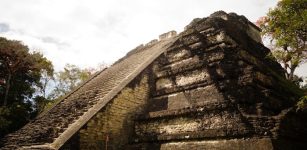 Hundreds Of Ancient Ceremonial Sites Discovered Near Aguada Fénix – The Largest And Oldest Maya Monument In Mexico
Archaeology | Nov 8, 2021
Hundreds Of Ancient Ceremonial Sites Discovered Near Aguada Fénix – The Largest And Oldest Maya Monument In Mexico
Archaeology | Nov 8, 2021 -
 Queen Mama Ocllo: Legendary Wife Of Sapa Inca Manco Capac In Beliefs Of Andean People
Featured Stories | May 6, 2020
Queen Mama Ocllo: Legendary Wife Of Sapa Inca Manco Capac In Beliefs Of Andean People
Featured Stories | May 6, 2020 -
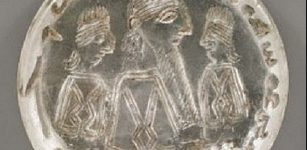 Mani: Apostle Of Light And His Ancient Rock Crystal Seal
Featured Stories | Jul 2, 2018
Mani: Apostle Of Light And His Ancient Rock Crystal Seal
Featured Stories | Jul 2, 2018




